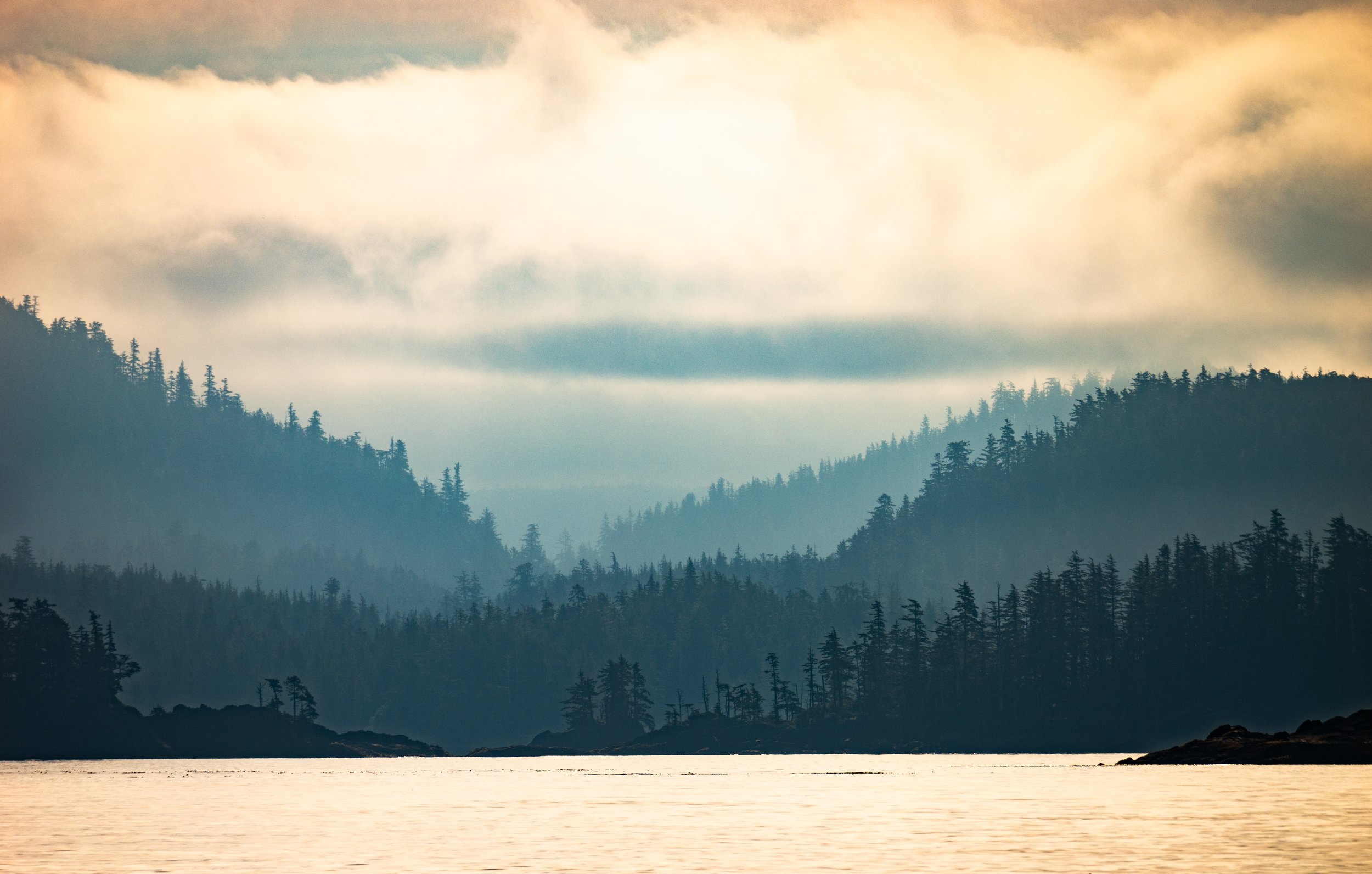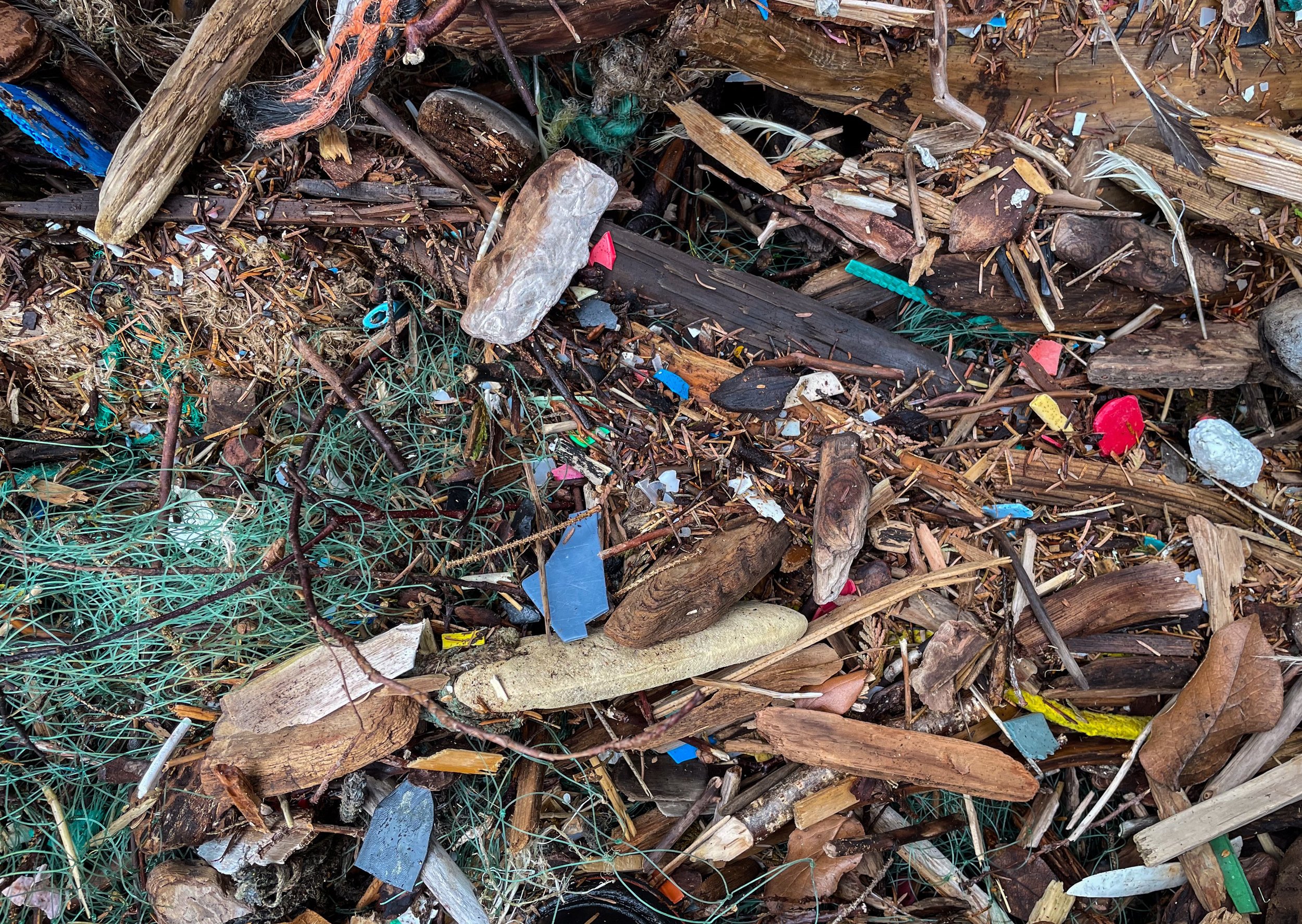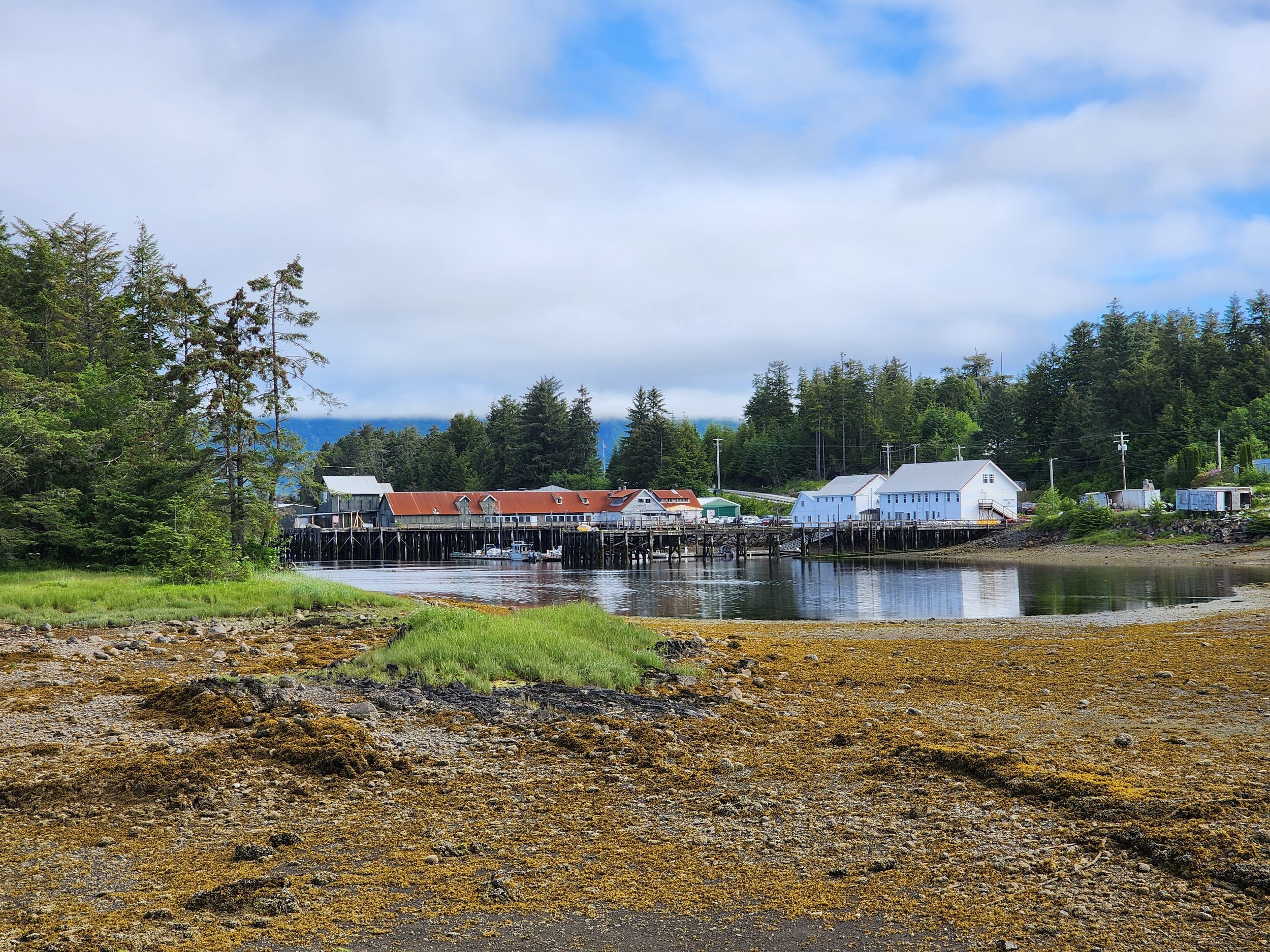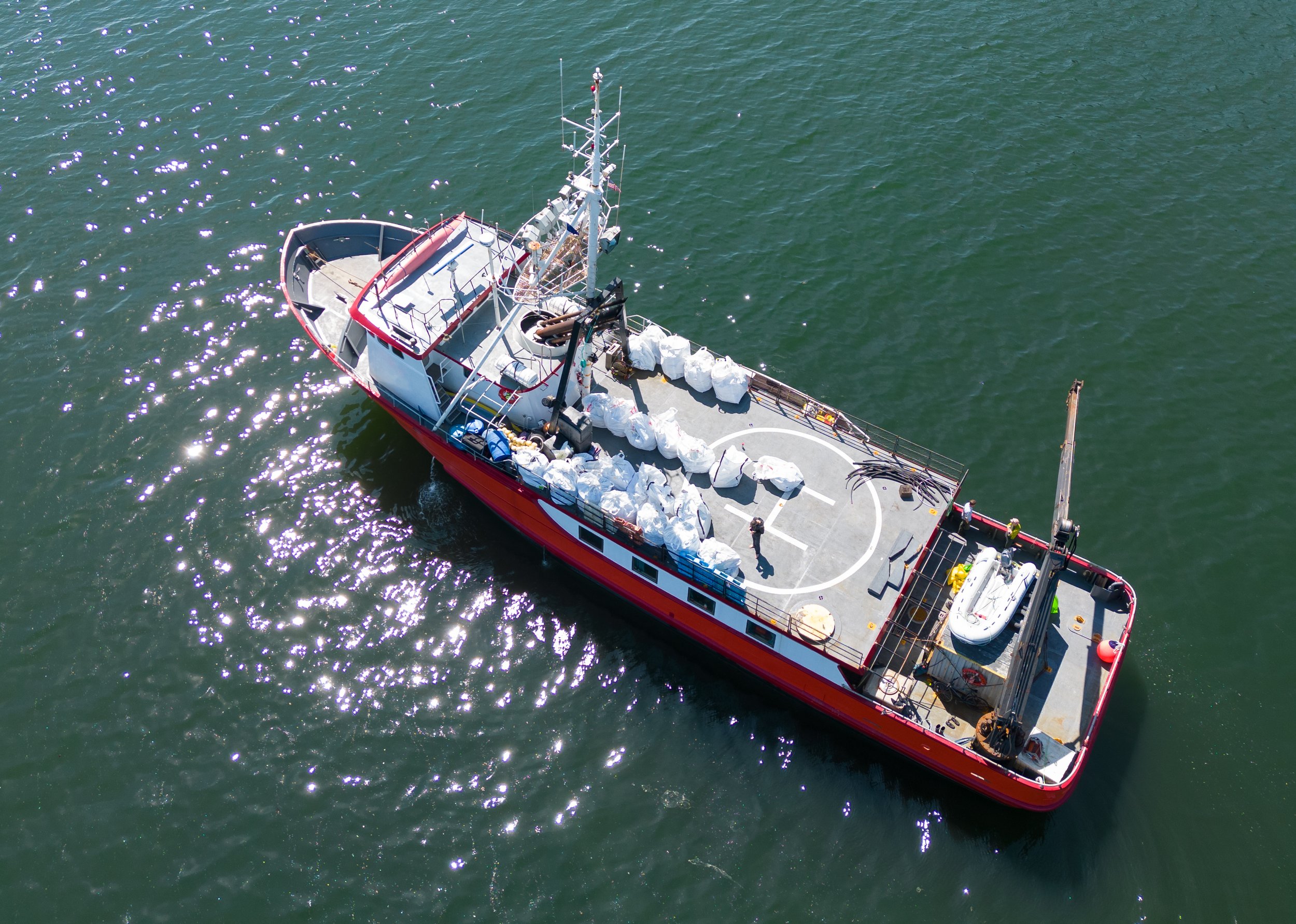Guest Blog: Expedition Two, Southeast Alaska
When I used to think about going to Alaska, I would always picture a mountainous landscape with a cold, ethereal beauty. A crisp, clean haven home to all number of fascinating creatures and small communities – a place so different from my everyday life that I could forget about the world’s problems and imagine myself back in an age where people worked alongside nature, rather than exploiting it. This had been such a bucket-list place for me to visit that when the opportunity for me to go arose, I almost couldn’t believe it.
Now, to clarify, my trip wasn’t some all-inclusive cruise where we visited the most tourist-tracked locations in and around Alaska and spend two weeks sight-seeing and lounging (though I did meet a few people doing one of those on my flight into Ketchikan). No, this trip was for something far more important – I was joining a quest to help save the ocean. And yes, I know how lofty that sounds, but the goal of this excursion was not to single-handedly fix all the things threatening the health of our oceans, nor was it to spend a few days picking up trash just to gain some karma points from the universe. The real purpose of our expedition, as I see it, was to learn, teach, and inspire ourselves and others about one of the biggest environmental issues the world is currently facing – ocean plastics.
Before my grand Alaska adventure, I would have considered myself decently knowledgeable about ocean plastics. I mean, we’ve all seen those haunting images of birds with plastic yokes of 6-packs tightly strung around their necks, or sea lions sporting chokers (literally) made of fishing line. Ocean plastics and marine debris are a huge problem for the health of our oceans and the creatures that live there. However, on my expedition with the Ocean Plastics Recovery Project (OPR), I learned there is so much more to the ocean plastics issue and how we can help.
When I first got off the plane in Ketchikan, I was already running late. My plane had been delayed by an hour and I was terrified about missing my connecting flight to Klawock because it was the last flight of the day. But as soon as I set foot in the Ketchikan airport, I realized I had nothing to worry about. The airport itself was so small, it would probably only take me 5 minutes to get from my plane to anywhere else in the airport. Plus, the airline employees were extremely helpful and patient with those of us on the delayed flight and made sure we were all accounted for. As soon as my heart rate started to decrease from anxiety, it rose again from pure excitement. I was in Alaska! Somewhere I had been dreaming of visiting for years. And I was here to do something impactful and important, something that I was extremely passionate about.
The flight from Ketchikan to Klawock was incredible. I knew Alaska was beautiful, but it was so different to see it in person. Mountainous islands covered in evergreens stood tall and striking against the blue hues of the ocean that surrounded it. Even the varying degrees of depth to be seen in the water itself were breathtaking, not to mention the low clouds covering the snow-flecked mountain tops that we would occasionally pass through. By the time we landed again, I was on cloud nine. I thought, if this is just what I’ve seen from the plane, I can’t wait to see what other sights the coming days will bring.
After landing, the first person I met who would be joining me on the Ocean Plastics Recovery Project was Chris Bray, an Australian wildlife photographer. We spent the drive to the docks introducing ourselves and talking about how we each came to be a part of this expedition. At the docks themselves, I met Scott Farling and Andy Schroeder, the co-founders of OPR. It’s hard to get an idea of a person just through texts and emails, and I’m not entirely sure what I expected, but Andy and Scott immediately struck me as two people who are knowledgeable and passionate about their work and excited to share this experience with as many other people as possible. Over the course of the next nine days, this would prove to be even more true than I thought, but we’ll get to that. The rest of the team (not including the crew) I met on the top of a hill scattered with totem poles. Everyone was basking in the sun reading, drawing, or napping. Through introductions I came to learn that these people had come from all walks of life – high school, university, industry – and had such a wide range of knowledge and talent both in plastics and other interests. I even recognized several students that worked in the lab next to mine back at Oregon State University.
Once the ship, The Steadfast (a great name by the way), arrived at the dock, it was time to hop aboard. On the ship we met all the crew, a truly amazing group of individuals with fascinating backgrounds, who spent the whole time keeping the flow of the ship running smoothly. I can’t imagine the trip would have been anywhere near as comfortable or successful without them. I will admit, the first few hours being on a watercraft were not my stomach’s favorite place to be, but after a while my nausea settled, and I felt as if I had lived on boats my whole life. Of course, there were people on the boat who actually did that, and I’m sure it’s quite different than spending nine days on mostly calm waters, but I was just happy to not be suffering through seasickness for the entirety of the expedition.
We started out the first day with a great ice breaker centered on explaining three pictures that represented ourselves in some way. I have no way to measure how much that activity strengthened our connection with each other, but I do know that each day we spent picking up debris from beaches, we became closer and more comfortable with one another, and I like to think that breaking a little ice that first day helped accelerate those relationships. Every day we were split into groups, each led by a responsible team leader. Because we switched up the teams every day, I got to work with everyone at least once, some multiple times, and each group dynamic was unique in the best ways. We likened the experience to a sitcom, where each episode was represented by a team’s interactions and experiences on the beach and the “season recap” occurred as the highlights were recounted over dinner each night. It was entertaining to hear the different dynamics of each team, and I loved the inside jokes everyone carried back from the day’s cleanup adventures.
For every bit of fun we had, there was just as much hard work going on. I have never been a morning person, and sleeping in cabins with absolutely zero natural light didn’t help, but the prospect of getting up every single day to go out and make a positive impact made getting up for breakfast at 7 am so worth it. Granted, coffee every morning was still a necessity, but that first hour in the morning interacting with everyone always helped set the tone for the day and reinvigorated my drive for the goals we were working towards.
Throughout the nine days of the expedition were interspersed presentations from several different members of the group. These presentations were one of the highlights of this trip for me because I learned so much from every single one. People presented on things like ocean plastics and animal detangling, pyrolysis and its role in plastic recycling, and the history and future of the OPR project. It was rewarding to see the passion everyone had for this work and learn about how many different aspects to the marine debris problem there really are. Andy and Scott’s presentation about OPR and where it started was especially moving, and I thoroughly enjoyed hearing about what inspires them each day to continue pursuing such an important mission.
From different backgrounds, Andy and Scott were able to mesh their individual expertise together to create something amazing, something that has touched the lives of so many others. At some moments it was a bit overwhelming to listen to, after all, how can such a small group of people begin to tackle such an enormous project? But mostly, it was invigorating, and sparked new life into my own passions for plastic waste recovery and recycling. I was so inspired by every single person on this mission and loved getting to know them and their reasons behind getting involved with OPR. Hearing about each person’s love for nature and our planet brought new motivation for continuing my own path towards environmental conservation and helped me rediscover an essential part of who I am.
Along with relearning things about myself, I also learned valuable information about the plastic waste we were recovering, including the difference between rigid plastics and line. Mostly I learned that I would rather pick up rigid plastics for ten hours than line for two. Rigid plastics are things like water bottles, buoys, blue 55-gallon drums, and the occasional croc (singular). Lines on the other hand are things like nets and rope used on fishing boats, and they really like to tangle. When you manage to untangle a huge mess of line from whatever logs or rocks it’s wound around, it’s such a satisfying experience, but I will say it takes a lot of willpower to push through tugging and shifting and cutting and tugging some more to make it to that point. The final relief coupled with almost falling over from pulling the last bit free is what I assume runner’s high is like (I can only assume, since I wouldn’t be caught dead, running), and despite my dread each time I saw yet another huge net caught in all the driftwood, I was always ready to face the challenge.
Teamwork was such an important skill for tackling line, and really for the overall success of this entire expedition. One person alone cannot move nearly as much as several working together, especially when certain clumps of line weighed nearly a thousand pounds. This aspect really enhanced the rewarding nature of the whole experience. I got to see first-hand the power of teamwork and what incredible things can be accomplished when people work together toward the same goal. It’s such an important lesson for the broader objective of the Ocean Plastics Recovery Project, which is to spread awareness about marine debris and its impact to as many people as possible. The ocean plastics issue cannot be solved by the few, it must be solved by the many, and OPR is helping to pave the way through action, education, and outreach. I am truly grateful to have been a part of such an important project surrounded by inspiring people and will cherish it as one of the most rewarding and impactful experiences of my life.
The author, Selena Moore (pictured above right) is an undergraduate student at Oregon State University. She took part in an OPR expedition July 12-19, 2023 that removed over 20,000 lbs of ocean plastic from the marine environment.











